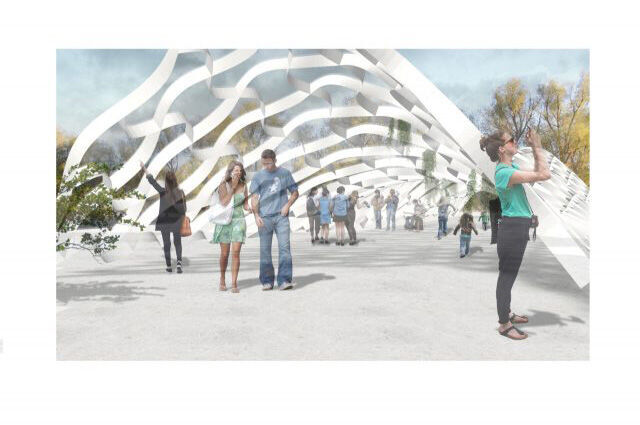M.Eng. Dissertation Award
The intriguing characteristics of auxetic materials are a consequence of their ability to expand when stretched and contract when compressed. This counterintuitive behaviour is due to their negative Poisson’s ratio, v. This is contrary to typical materials that exhibit lateral shrinkage when stretched and bulging when squashed. Auxetic behaviour relies on a combination of the spatial arrangement of the material and the substantial volumetric strain when subjected to loading. It is because of this reliance on geometry, rather than on the material composition, that such materials are scale-independent, and are therefore applicable to the micro-, meso- and macro-scale. This essentially means that engineers may not only consider auxetic materials, but also structures.
Auxetic materials boast of a number of unique behavioural properties that conform to a negative Poisson’s ratio, which have resulted in their recent application to many fields and at various scales. However, research has largely revolved around small-scale applications in high-tech fields; biomedical devices, such as prosthetic implants and stents, blast-proof textiles and smart fabrics are just a few examples. This dissertation looks towards geometry, design and engineering to build an understanding of the formal and structural potential of auxetic cellular solids on an architectural scale. The capacity of auxetic structures to generate synclastic curvature when an out-of-plane bending moment is applied has been recognised by architects and engineers as a fundamental property, presenting innovative solutions to designing organic geometries of high topological expression using planar elements. The natural tendency of auxetic structures to form dome-shaped surfaces suggests developments in structural systems which are defined by complex curved shapes, namely gridshells and bending-acting structures.
A binary approach of producing physical scaled models and generating computer simulations using Finite Element Analysis is adopted to investigate the fundamental geometrical parameters affecting the mechanical behaviour of an auxetic pattern. Together, the approaches will seek to establish relationships between these physical parameters and the topological character of the auxetic structure during loading, in an attempt to justify potential applications of the sinusoidal pattern in architecture.
Date:
July 19, 2024


